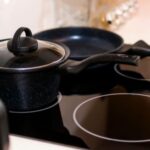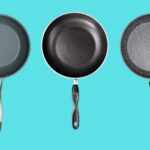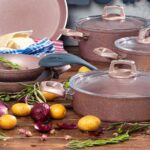Non-Stick vs Stainless Steel Cookware: Difference, Pro and Cons

When it comes to choosing a cookware set, one of the most important decisions you’ll make is what type of material to choose.
Two of the most popular materials are stainless steel and nonstick. Each has its own advantages and disadvantages, so how do you know which is right for you?
In this post, we’ll explore the pros and cons of each material so you can make an informed decision.
Non-Stick vs Stainless Steel Cookware: Overview
Stainless steel is a popular choice for cookware because it is durable and has a sleek, modern look. It is also resistant to rust and easy to clean.
However, one downside of stainless steel is that it can be difficult to cook with. Foods can stick to the surface and it can be hard to get them to brown evenly.
Nonstick cookware is coated with a material that prevents food from sticking to the surface. This makes it much easier to cook with, especially if you are new to cooking.
Nonstick cookware is also usually lighter and cheaper than stainless steel. However, the nonstick coating can scratch and wear off over time, and it is not as durable as stainless steel.
This is what all you might hear about both cookware right? Now let’s compare them in more detail.
Non-Stick vs Stainless Steel Cookware: Detailed Guide

Stainless Steel
Honestly speaking not all stainless steel cookware is the same so it is important to know about its types and features then it will be easy for you to differentiate them and once you will come to know it will be easy to compare them with nonstick cookware.
Types of Stainless Steel Cookware
Single-Ply Stainless Steel
Single-ply is also non as a layer or single-layer cookware which is made with one layer of stainless steel that comes with a single thick layer of Stainless Steel. This construction is simple as well as it is less expensive too.
Half Clad Stainless Steel
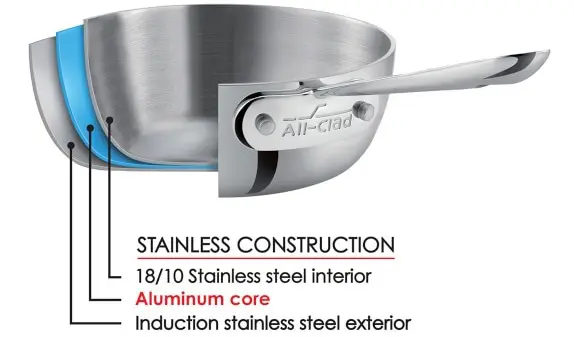
Half Clad also known as Tri-Ply Stainless Steel cookware, this type of cookware is more expensive than one layer but it provides much better heat conduction. This type of stainless steel comes with an aluminum or copper core that is sandwiched between the layers of stainless steel.
Because only its base comes with aluminum or copper, it is called half-clad.
Fully Clad Stainless Steel
This type of stainless steel is entirely bonded with an aluminum or copper core including walls. It offers better heat conduction than half clad because its whole body has an aluminum or copper layer.
Because of this feature, it is preferred most for cooking as well as it is more expensive than the other two types.
Why add Aluminum With Stainless Steel?
The reason for adding aluminum with stainless steel is to conduct heat better. As you know that aluminum helps in even cooking as it is good conduction of heat and on the other hand stainless steel is nonreactive as well as it is durable.
Non-Stick
Like stainless steel, we have different kinds of nonstick cookware and it is quite important to know about its types before we compare them with stainless steel.
Types of Nonstick Cookware these two types of cookware are on a different basis so that you can find out which one is better
Teflon
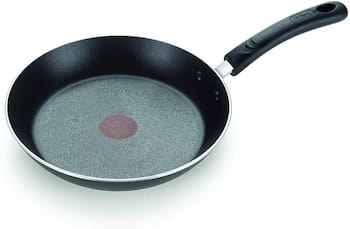
Teflon is the most popular nonstick coating. It is made with a polymer called polytetrafluoroethylene (PTFE) and is commonly known as Teflon which is a brand name of Dupont. It is one of the most common nonstick materials used in cookware.
Ceramic
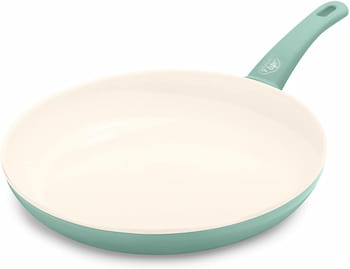
It is one of the safest nonstick materials used in cookware. It is made with natural materials such as sand and it does not release any harmful chemicals even if it is heated at high temperatures.
Unfortunately, most of the ceramic cookware available out there is not pure ceramic cookware. They are made with a ceramic coating that is applied to aluminum or steel cookware(rarely). This type is less durable than pure ceramic cookware and the coating can chip off over time.
Hard Anodized
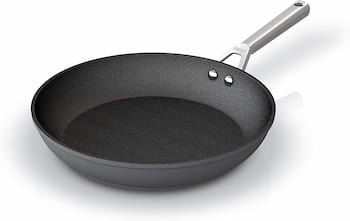
Another type of nonstick cookware is hard anodized cookware. It is made with aluminum that is treated with an electrolytic process to make it harder and more durable.
It also has a nonstick surface, but it is not as smooth as the PTFE or ceramic cookware.
Now let’s see some features of both kinds of cookware so that it will be easy for you to decide which one is better.
Stainless Steel Cookware Pros
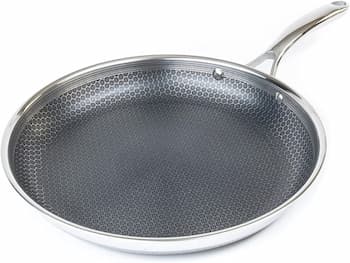
- Cookware made of stainless steel is dishwasher safe. This means that you can put it in the dishwasher without worrying about it rusting or becoming damaged.
- Cookware made of stainless steel is non-reactive, which means it will not react with food. This is important because it means that the food will retain its flavor and nutrition.
- Stainless steel can withstand high temperatures, making it a good choice for cooking at high heat. This is because it does not easily warp or melt.
- Cookware made of stainless steel is non-toxic and safe to use. This is because it does not contain any chemicals or lead.
- Stainless steel cookware is oven-safe which is the best thing about it.
- As stainless steel is ferromagnetic, it is induction safe. Induction users don’t have to worry about whether their cookware will work on their stovetop.
Stainless Steel Cookware Cons
- The main disadvantage of stainless steel cookware is that it is a poor conductor of heat.
- It is not nonstick so you can’t avoid having to use oils or fats when cooking which some people may not like.
- It can also be heavy, making it difficult to handle.
- It is expensive compared to other types of cookware.
Pros of Non-Stick Cookware
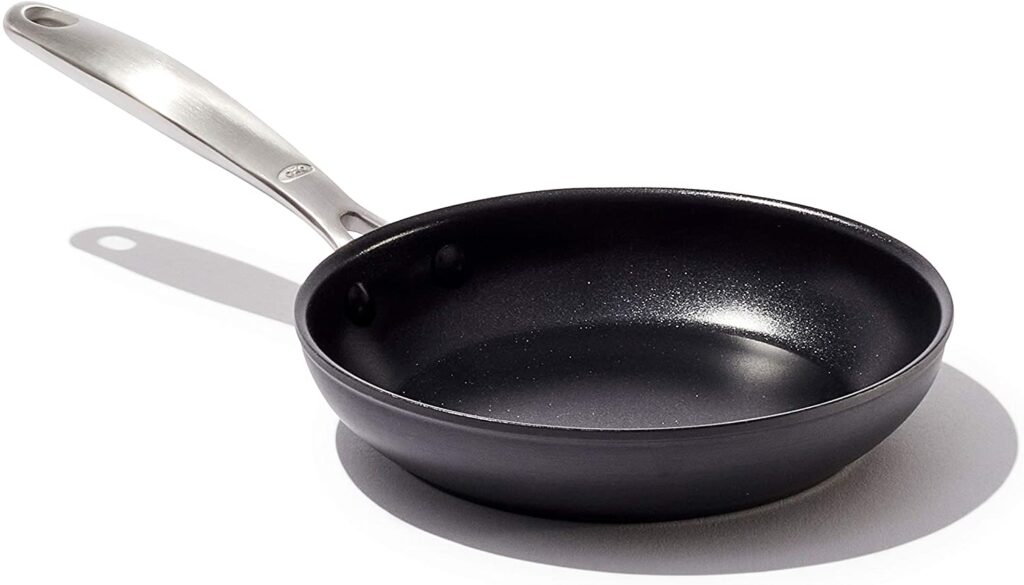
- The biggest advantage of nonstick cookware is the nonstick surface which makes cooking much easier and healthy as there is no need to use oil or butter to prevent sticking and thus cleanup is also very easy.
- Unlike the early versions, the nonstick cookware of today is made without using any harmful chemicals. The nonstick coating is made from materials like ceramic, silicone, or other polymer resins which are considered safe for cooking.
- Another great advantage of nonstick cookware is that it distributes heat evenly across the surface due to the Aluminum metals used in its construction. This ensures that food is cooked evenly without any hotspots.
- Nonstick cookware is generally very lightweight which makes it easy to handle as compared to tri-ply stainless steel.
- Nonstick cookware is very affordable as compared to other types of cookware like stainless steel or cast iron.
- Nonstick (Ceramic) cookware is also available in a wide range of colors and designs which can brighten up your kitchen.
Cons of Non-Stick Cookware
- Teflon is made with polytetrafluoroethylene(PTFE) which is a kind of plastic. When heated over 500F it starts releasing harmful toxins in the air which can be very dangerous to your health.
- It is not oven-safe, so you won’t be able to use it for all your cooking needs.
- Less durable than stainless steel and can be scratched easily. When the nonstick coating chips or peels, it can release harmful chemicals into the food which can be dangerous to consume.
- Nonstick cookware is not suitable for high-temperature cooking as the nonstick coating can start to break down and release harmful chemicals into the food.
- Usually most of the time you can’t use them on induction cooktops.
- Not Dishwasher Safe because harsh detergents and high temperatures of the dishwasher can damage the nonstick coating.
Non-Stick vs Stainless Steel Cookware: Which one to Choose
Now that you know the pros and cons of both stainless steel and nonstick cookware, it’s time to decide which one is right for you.
If you are looking for cookware that is durable and dishwasher safe, then stainless steel is the way to go.
If you are looking for cookware that is nonstick and easy to use, then nonstick is the way to go.
If you want the best of both worlds, then you can opt for hard-anodized cookware that has a nonstick coating and is also oven-safe up to 600 degrees F.
Also, it is less likely to scratch and there are some brands like All-Clad that make Hard Anodized cookware that can be used on all cooktops, including induction.
If you are looking for a durable, long-lasting option, stainless steel is a good choice. However, if you want an easier cooking experience, nonstick might be a better option.
Is ceramic cookware better than stainless steel?
It depends. Ceramic cookware is usually less durable than stainless steel and can be scratched easily. However, it is a safer option if you are concerned about chemicals leaching into your food.
What is the safest nonstick cookware?
Among all nonstick cookware, ceramic is the safest option. Ceramic cookware is nonreactive and non-toxic which means it will not leach chemicals into your food when cooking acidic foods and is free of harmful chemicals like PFOA and PFOS.
When to use stainless steel vs nonstick
If you are looking for a durable, long-lasting option, stainless steel is a good choice. However, if you want an easier cooking experience, nonstick might be a better option.
Can we use a nonstick on the induction stove?
Usually, nonstick pans have aluminum or copper base which makes them incompatible with an induction stove. However, there are some nonstick pans that are made with a magnetic stainless steel base and can be used on induction cooktops. The best example is the Al Clad HA1 collection.


